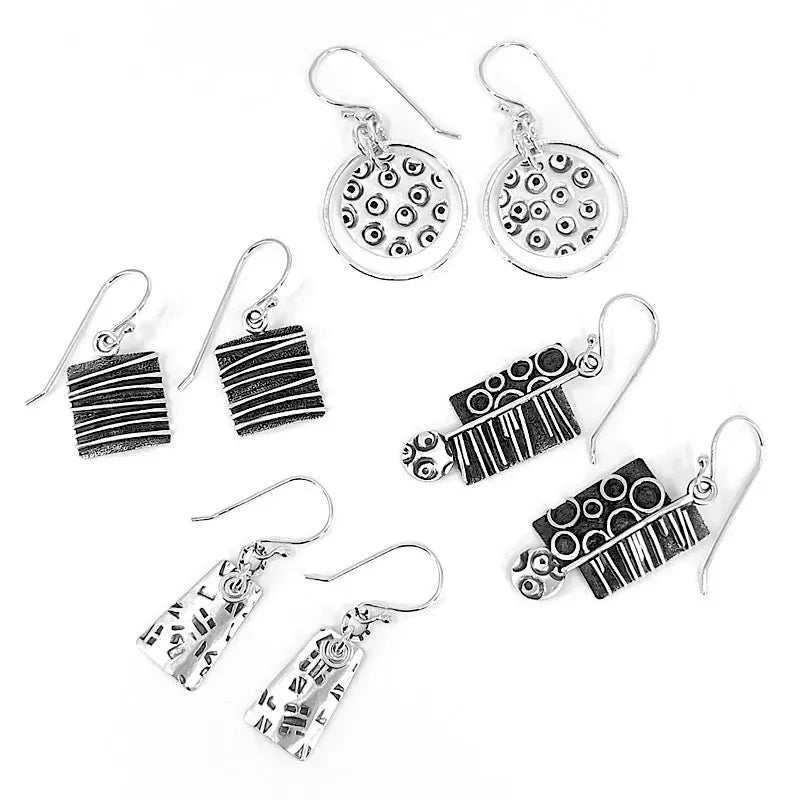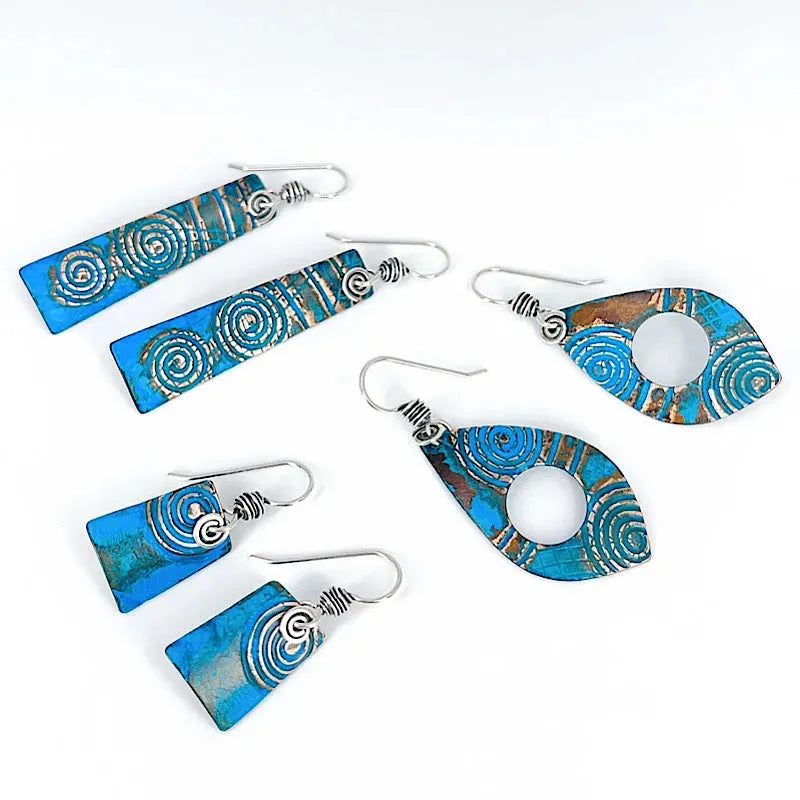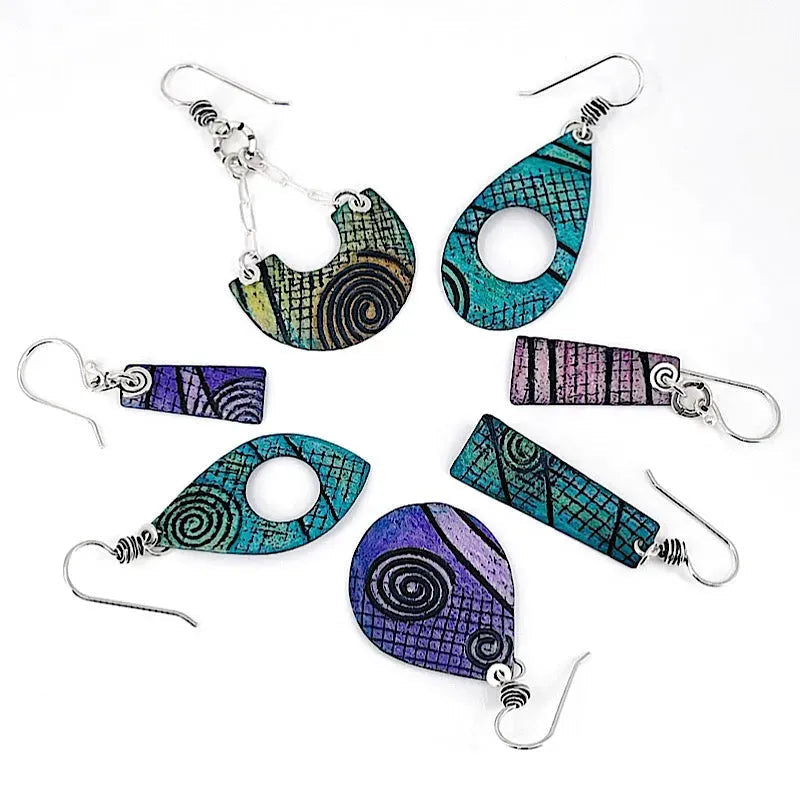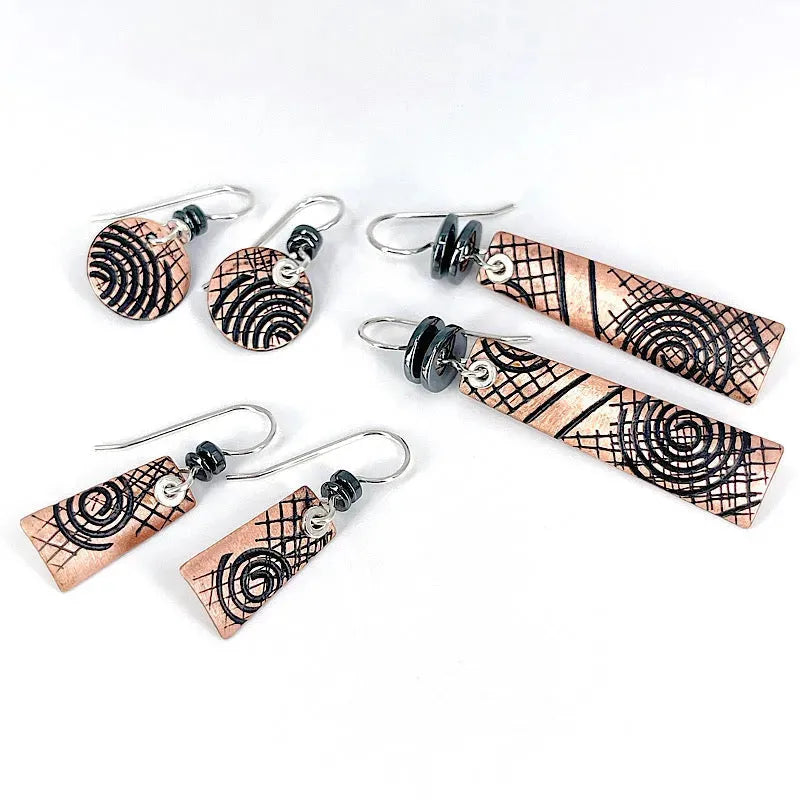
A gemstone palette for “happy pieces” we created during the pandemic including: Rubies, Amethyst, Turquoise, Amazonite, Aquamarine, Smoky Quartz, Rose Quartz, Citrine and Carnelian.
Gemstones have fascinated humanity for thousands of years. Their vibrant colors and shimmering beauty aren't just eye candy—they've also been thought to hold special energies and powers. Across different cultures and eras, people have turned to these precious stones for wellness, protection, and spiritual growth. Let’s dive into the rich history of gemstones and the beliefs surrounding their healing properties, including how our own beliefs might unlock their potential.

From our gemstone collection, from left to right: Lapis Lazuli, Carnelian, Turquoise, Hematite, Kyanite, Jade.
A Historical Glimpse
Ancient Civilizations
Egyptians: The ancient Egyptians were enamored with gemstones like lapis lazuli, turquoise, and carnelian, not just as decorative pieces. They were crafted into amulets and jewelry, believed to offer protection and a direct connection to the gods. Pharaohs were often buried with these precious stones, hoping they'd guide them safely into the afterlife.
Learn more about ancient Egyptian jewelry. Also see Tutankhamun's (King Tut's) burial sarcophagus and nesting coffins and his gold & lapis funerary mask in this fascinating article about the discovery of King Tut's tomb.
Greeks and Romans: In ancient Greece and Rome, gemstones were more than decorative. Drinking from amethyst cups was thought to prevent intoxication—the name amethyst itself means "not drunk" in Greek! Warriors wore hematite for protection in battle. Emeralds were associated with fertility and rebirth due to their deep green, life-like color.
See a beautiful example: Roman gold & gemstone necklace.
Eastern Traditions
India: In Ayurvedic medicine, gemstones play a significant role in balancing the body's energies. Certain stones are linked to specific chakras (energy centers) and are believed to influence physical and emotional well-being. Kyanite, for instance, is thought to align all chakras, promoting overall harmony, while carnelian is associated with the sacral chakra, boosting creativity and passion.
China: Jade has been highly valued in Chinese culture for centuries. More than just a pretty stone, jade was considered a symbol of purity and moral integrity. It was often carved into talismans and used in rituals to bring harmony and prosperity into people's lives.

From our gemstone collection from left to right: Amethyst, Rose Quartz, Citrine, Labradorite, Clear Quartz, Black Tourmaline, Tiger’s Eye, and Sapphire.
The Meanings Behind the Stones
Different gemstones have been associated with various qualities and properties across cultures. Here are some well-known stones and their popular meanings:
- Amethyst: Thought to promote calmness and clarity.
- Rose Quartz: Associated with love and emotional healing.
- Citrine: Believed to attract abundance and positive energy.
- Carnelian: Said to boost courage, creativity, and motivation.
- Labradorite: Believed to aid in transformation and protect against negativity.
- Kyanite: Thought to encourage communication and self-expression.
- Turquoise: Associated with healing, protection, and balance.
- Black Tourmaline: Used for protection against negative influences.
- Clear Quartz: Known as the "master healer," thought to amplify energy and thought.
- Jade: Linked to harmony, balance, and good fortune.
- Lapis Lazuli: Associated with wisdom and truth.
- Tiger's Eye: Believed to bring courage and confidence.
- Moonstone: Connected with intuition and balance.
- Sapphire: Symbolizes wisdom, loyalty, and nobility.

Prehnite is said to be a stone of unconditional love, enhancing inner knowing, calm, peace & protection — helping your heart guide your action toward your goals. One-of-a-kind sterling silver & prehnite necklace by Kristin Christopher.
The Power of Belief and Intention
While these stones are undeniably beautiful, the real magic may come from our own beliefs and intentions.
Harnessing Personal Power
- Mind Over Matter: Our beliefs can significantly shape our experiences. If you believe that carrying a piece of labradorite helps you navigate change more smoothly, you might find yourself feeling more adaptable and resilient.
- Setting Intentions: Using a gemstone as a physical representation of a goal or desire can keep that intention at the forefront of your mind. It's like having a personal talisman that reminds you of what you're striving for every time you see or touch it.
Practical Ways to Use Gemstones
- Choose What Resonates: Select a gemstone that aligns with your personal goals or simply one that you feel drawn to. Maybe kyanite appeals to you because you're looking to enhance communication in your relationships.
- Set an Intention: Hold or wear the gemstone and focus on your intention or desire. It could be as simple as seeking more patience or as specific as aiming for a promotion at work.
- Keep It Close: Carry the stone with you, wear it as jewelry, or place it somewhere you'll see it regularly, like your desk or bedside table, to reinforce your intention.

Wearing turquoise may help you feel more centered and balanced during a stressful day. Here, I am wearing two favorite one-of-a-kind turquoise pieces.
A Modern Understanding
In today's world, many people use gemstones as tools for mindfulness and personal growth.
- Mindfulness Aid: Gemstones can serve as a focal point during meditation or reflection, helping to ground your thoughts and enhance concentration. Holding or wearing citrine might help you feel more optimistic toward focusing on your goals. Wearing amethyst may help you feel more calm, connected, and better able to let go of negativity.
- Personal Symbolism: Gemstones can symbolize personal commitments or serve as reminders of your values and aspirations. Wearing a piece with carnelian might remind you to embrace your creativity every day. Jade may remind you to appreciate the abundance and vitality already in your life. What we focus on grows.

Gem palettes often inspire our jewelry designs. Top Left: Carnelian and Amber. Top Right: Dog’s Tooth Amethyst and Amethyst. Lower Left: Peridot, Aquamarine and African Turquoise. Lower Right: Jade, Brown Sunstone and Rainforest Rhyolite.
Gemstones as Design Inspiration
Gemstones have a way of drawing me in and sparking new designs. The properties of the gemstone often inspire symbolism that carries into the shapes and design of the sterling silver and overall essence of the piece. These pieces are one-of-a-kind, and seeing who matches with each piece is one of the best parts of what we do. I love that people can find meaning and inspiration, as well as beauty, in our work. See our selection of gemstone jewelry pieces.

To Sum it Up
Gemstones have been part of human history for thousands of years, cherished not just for their beauty but for the meanings we've attached to them. Whether or not they hold inherent powers, they can be significant tools in our personal journeys. The true magic might lie within us—in our ability to assign meaning, set intentions, and believe in possibilities.
Embracing gemstones as symbols can add a layer of meaning to our lives, helping us focus on what we value most. Whether you're drawn to them for their historical significance, their beauty, or the personal meanings you attach to them, gemstones can be a meaningful part of your path.
Disclaimer: The information provided in this blog post is for educational and entertainment purposes. The healing properties of gemstones are based on historical and cultural beliefs and are not supported by scientific evidence. They should not replace medical advice or treatment. For health concerns, please consult a qualified healthcare professional.
Have you had experiences with gemstones or thoughts on the power of belief and intention? Feel free to share your stories in the comments below.






